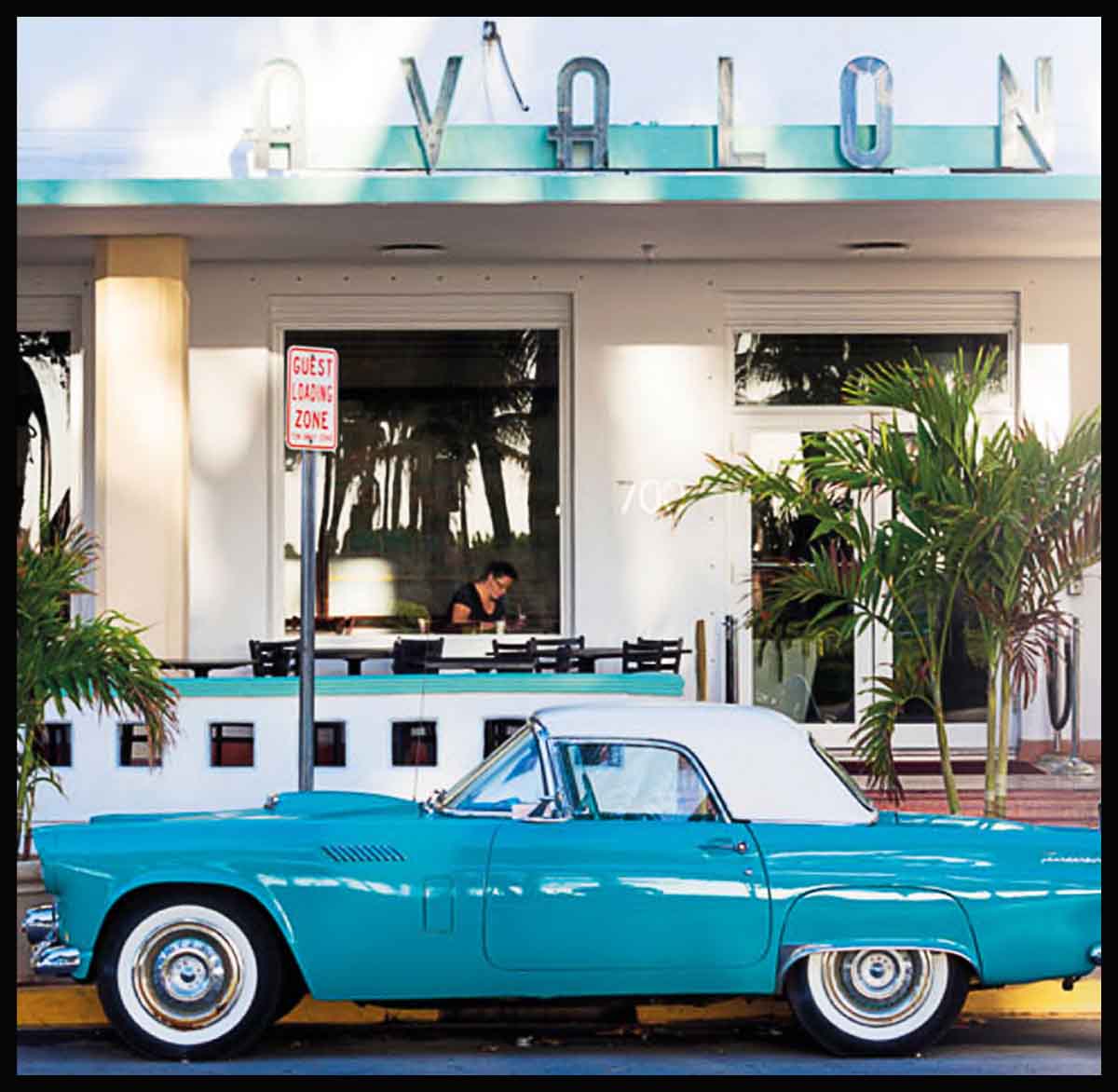
Ford Thunderbird
With 11 distinct generations of car launched over a 50-year period, the Ford Thunderbird was not conceived as a sporty car like the Mustang, but rather as a personal luxury car. With an emphasis on style and sophistication for two rather than outright performance, it gave American buyers an entirely new driving experience and the company more than 4.4 million sales, outdoing its rival Chevrolet Corvette.

THE THUNDERBIRD made its debut in 1954, initially as a two-seater convertible that Ford hoped would rival Chevrolet’s racy Corvette. With its scooping bonnet, covered, rear-mounted spare tyre, and (somewhat optimistic) 150 mph (241 km/h) speedometer, the car undoubtably had upmarket credentials, but like the early Corvettes it was never meant to be overtly sporting. While striking to look at, it used the same conventional 4.8-liter V8 as several other cars in Ford’s Mercury stable.
By emphasizing the Thunderbird’s comfort and luxury. Ford sold more than 16,000 cars in the first year, while Chevrolet managed to move only about 700 Corvettes.
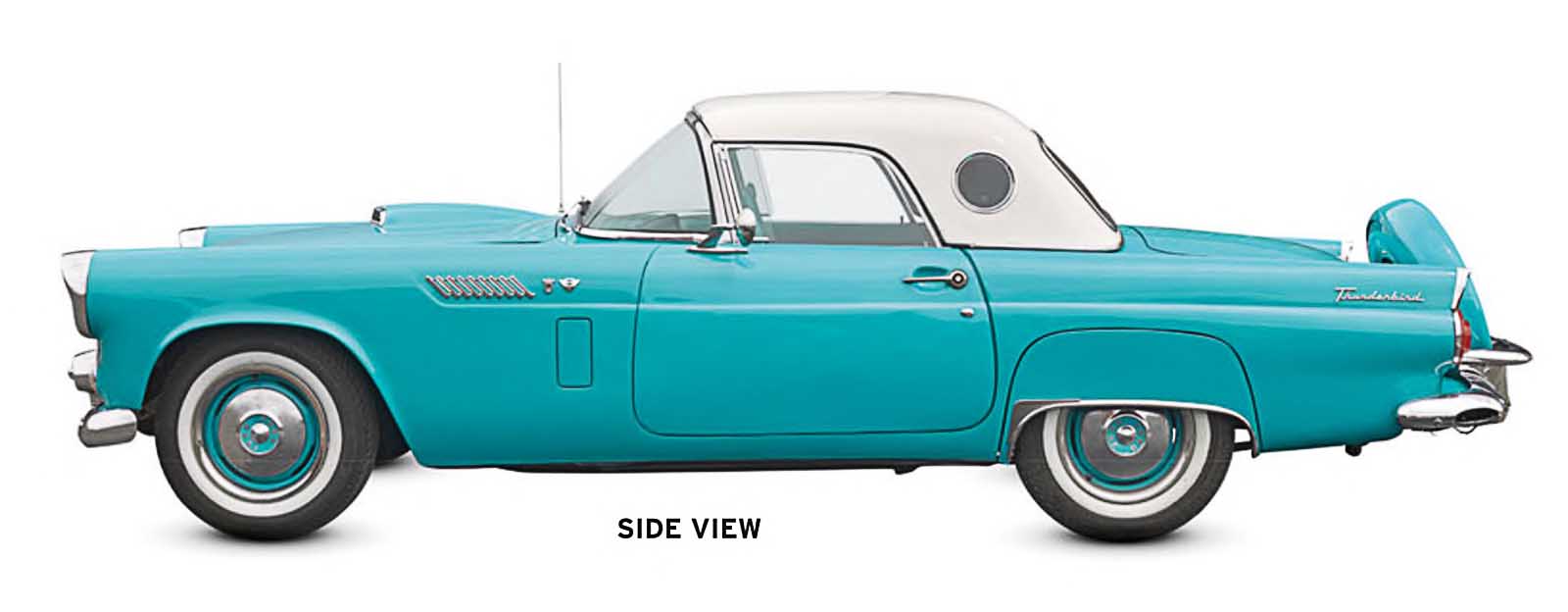
SPECIFICATIONS
| Model | Ford Thunderbird, 1954-57 |
| Assembly | USA |
| Production | 53,116 |
| Construction | Steel body and chassis |
| Engine | 4,785 cc, V8 |
| Power output | 193 bhp |
| Transmission | 3-speed manual or automatic |
| Suspension | Front coil springs, rear leaf springs |
| Brakes | All-round drums |
| Maximum speed | 115 mph (185 km/h) |

Ford badge
Originating in the deserts of the southwest, the name “Thunderbird” came from Native American legends and was proposed to Ford by young car stylist Alden Giberson, in 1954. Giberson purportedly won a $95 suit from Saks Fifth Avenue for suggesting the name.
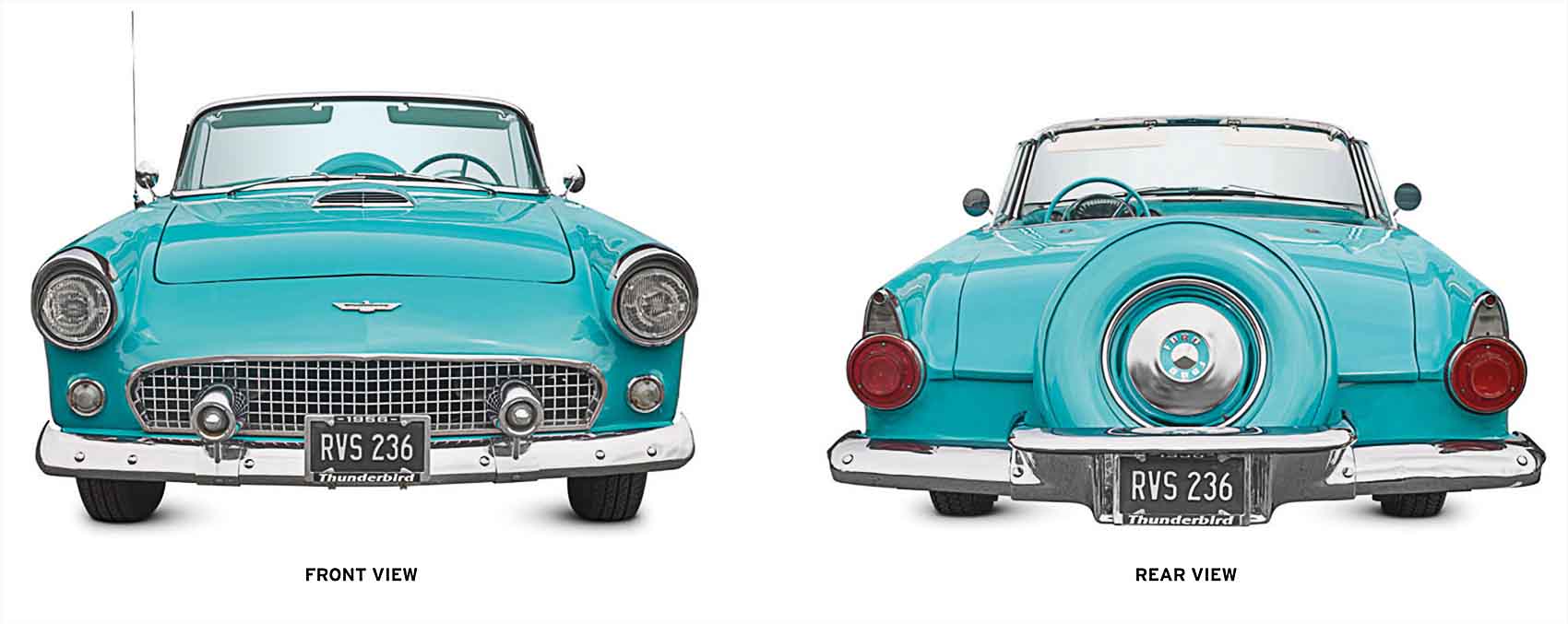
Styling
Although not the fastest Ford, appearance came first for many Thunderbird buyers. By making it relatively large for a two-seater, the company was able to create a sleek, low-riding shape with high levels of interior comfort. With its single headlamps and small rear fins it was instantly recognizable as a Ford.
ON THE ROAD
Looking back over a distance of 60 years or so, this huge car with its fins, chrome, and circular “opera” windows could scarcely look more American or be more redolent of the 1950s.
This accounts for much of its charm. As a lazy, luxurious boulevard cruiser it makes little sense anywhere except on the wide open roads of the US, but that too enhances its appeal.
It suggests the owner can afford what he wants whereas the rest of us must be content with what we can afford.
Most European cars handled better, and domestic rivals such as the Corvette were markedly faster. The Thunderbird name remains highly evocative, however, and these early models still look every inch the Hollywood star.
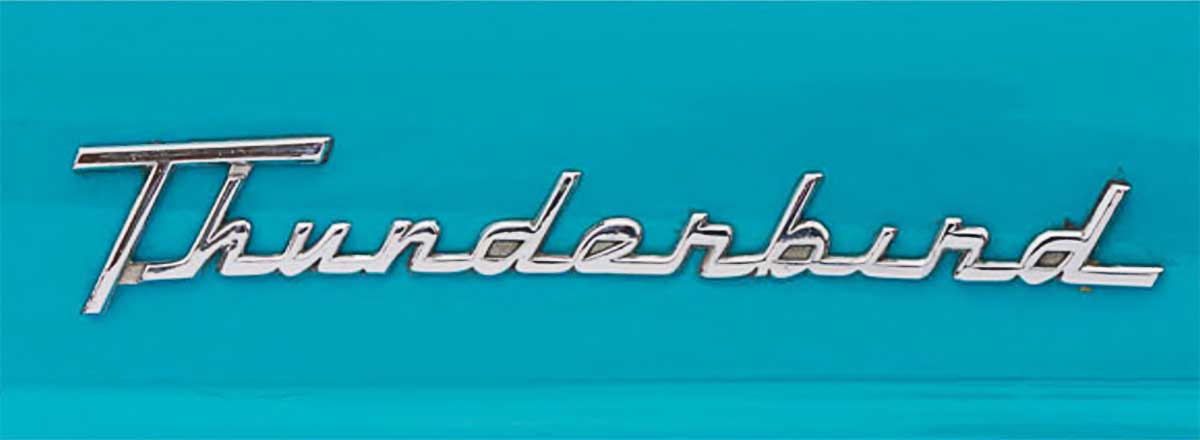
Iconic Thunderbird name
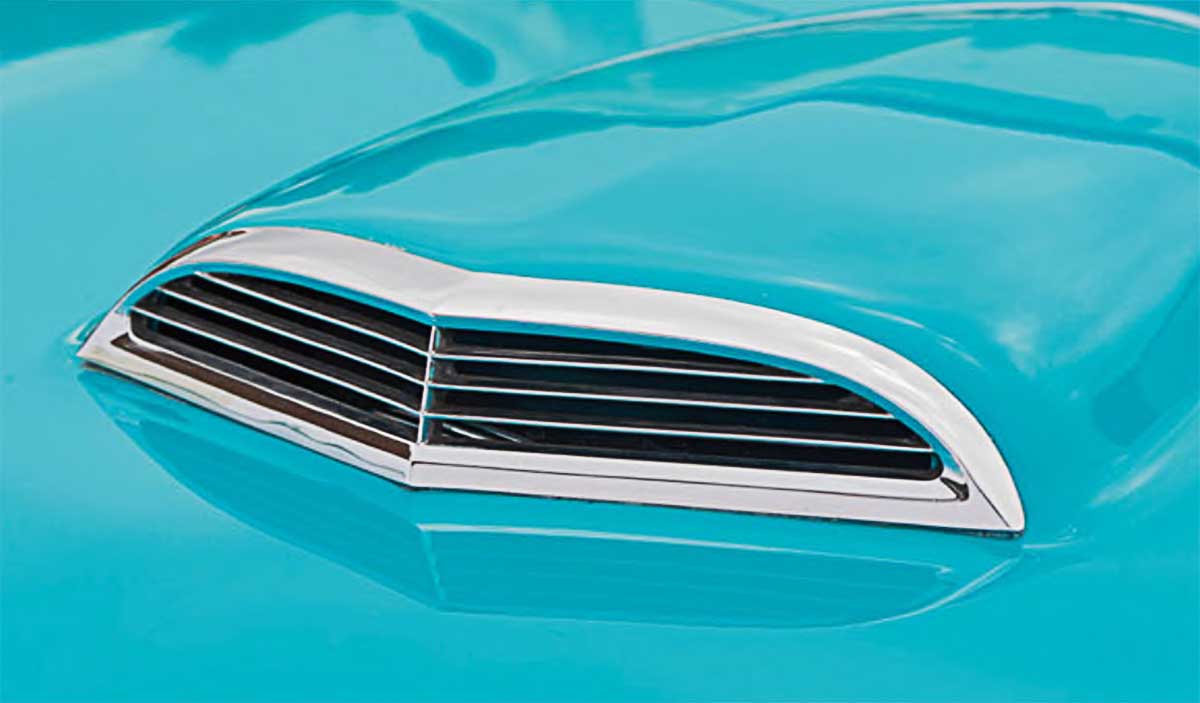
Chromed hood scoop hints at its V8 power
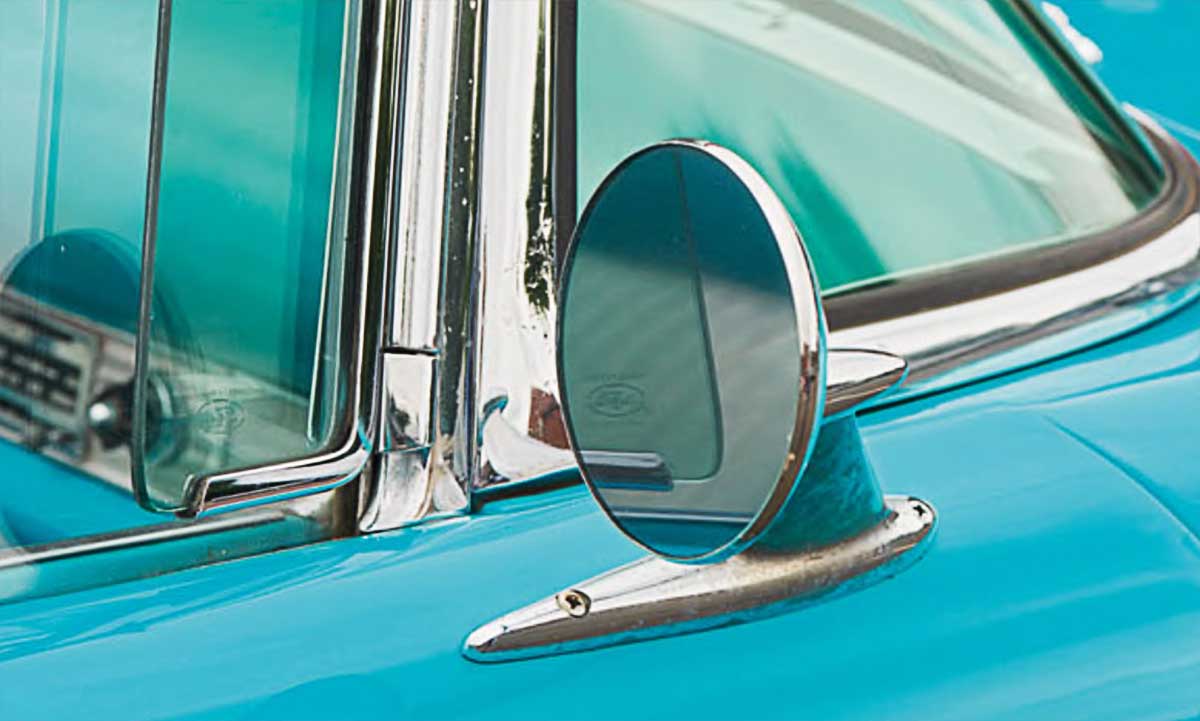
Tiny mirrors mounted on doors
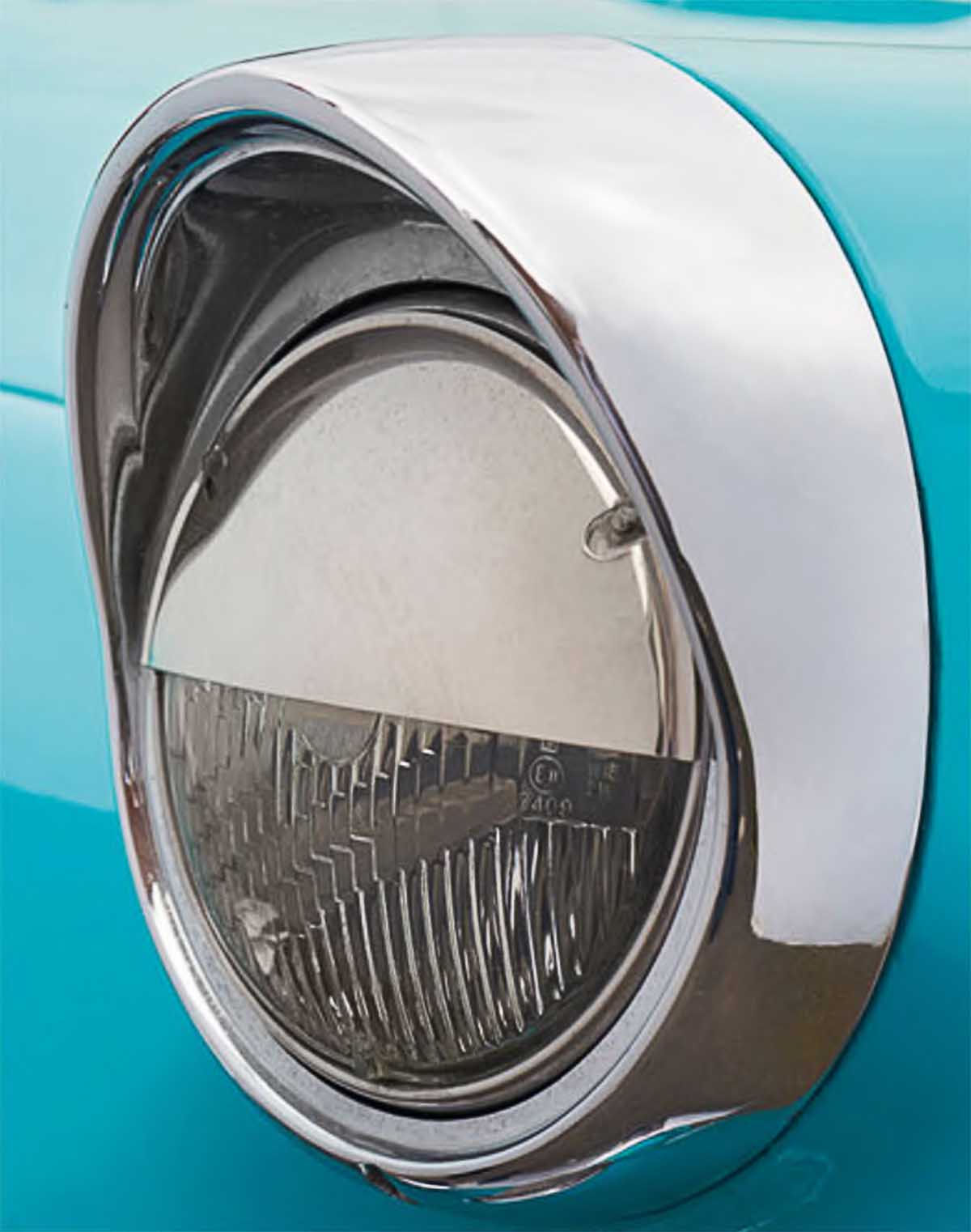
Deep, chromed eyebrows over headlights
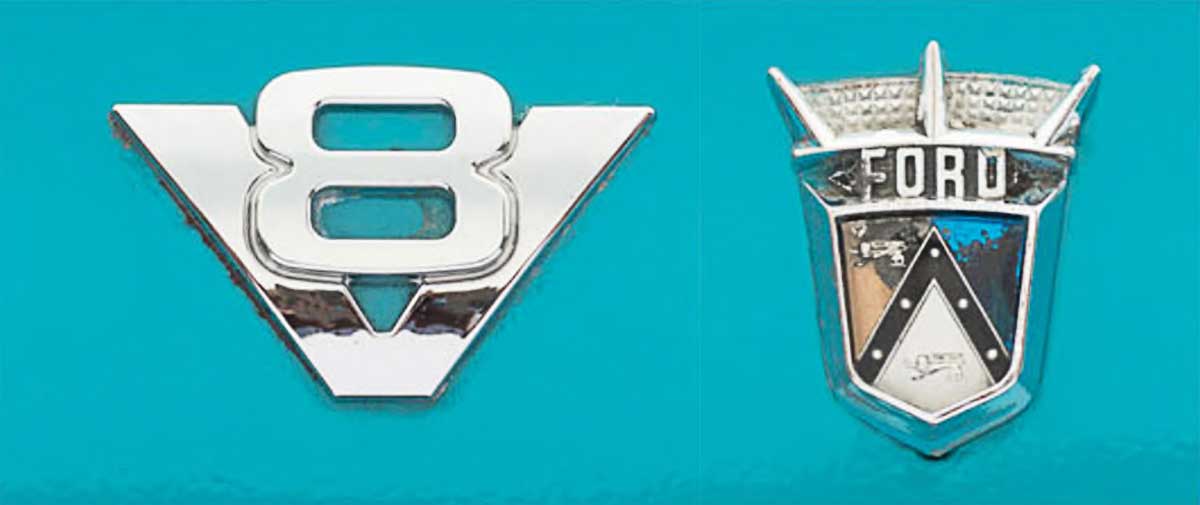
V8 was always the US engine of choice
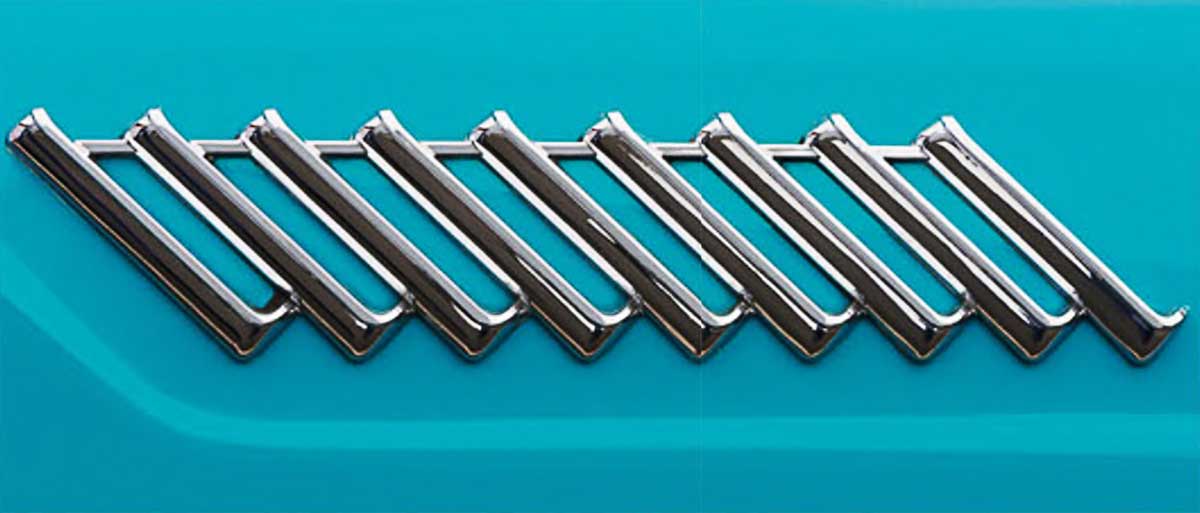
Louvres provide a sporting accent to the sleek shape
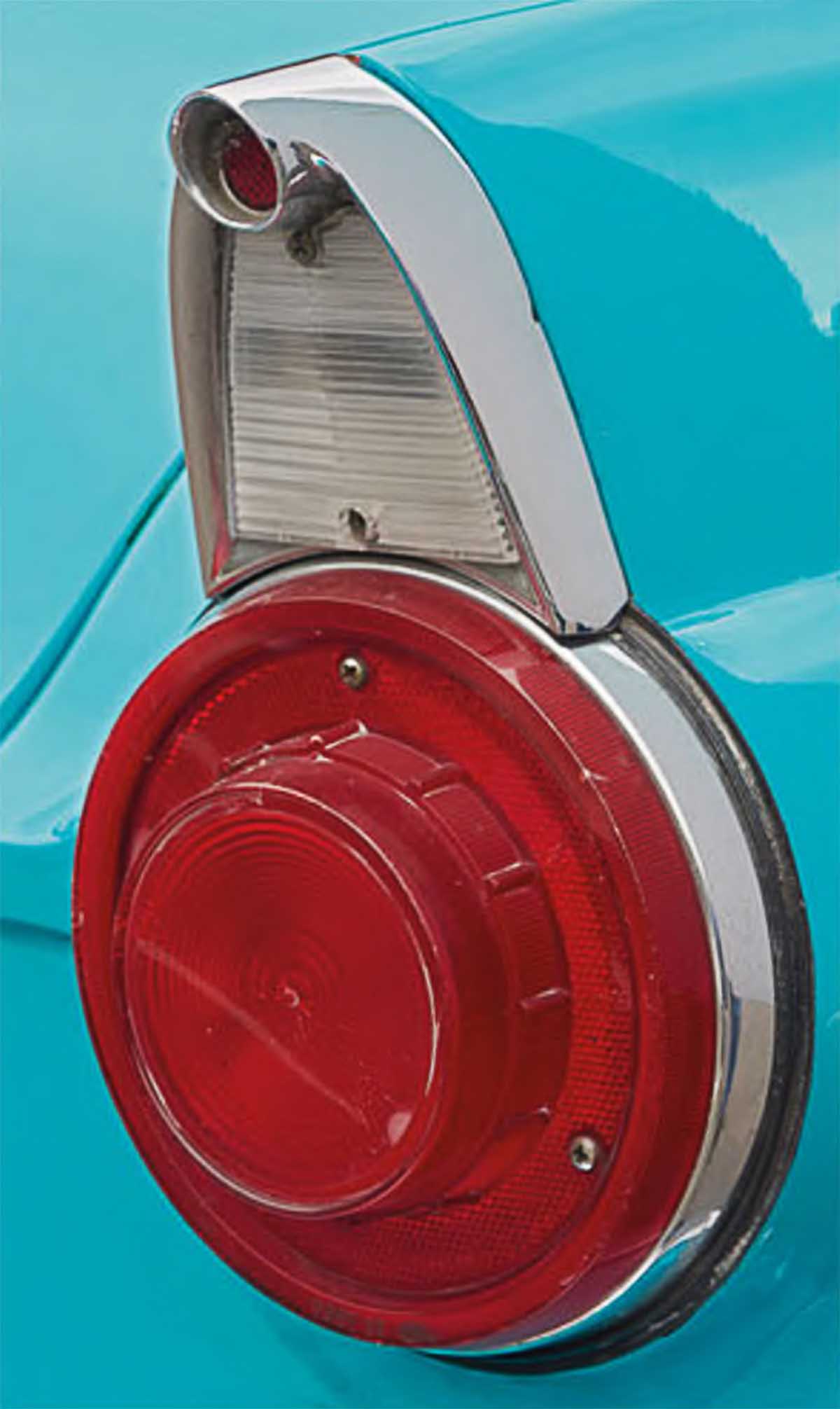
Lights echo period fashion for fins
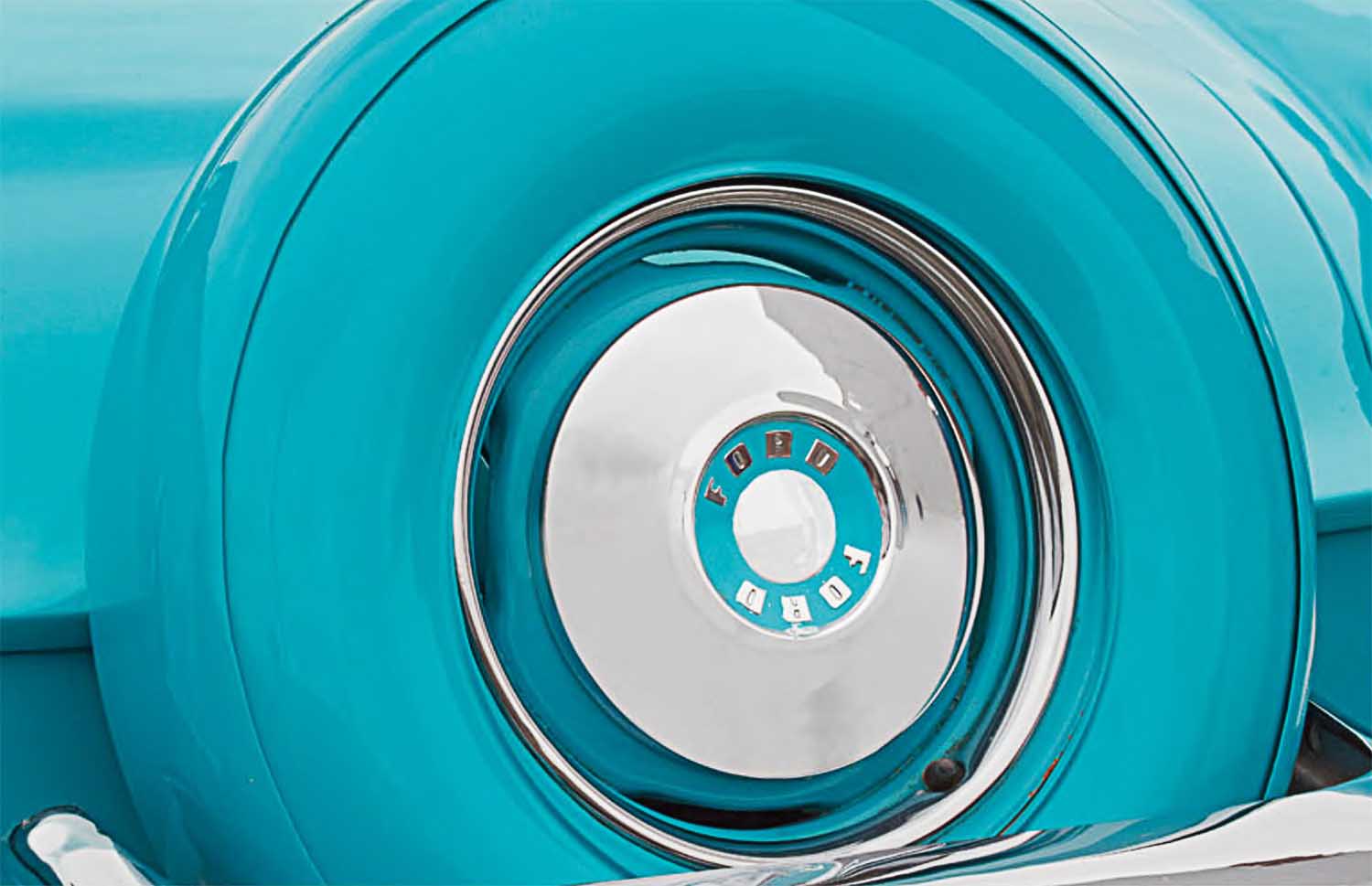
Rear-mounted “Continental” spare
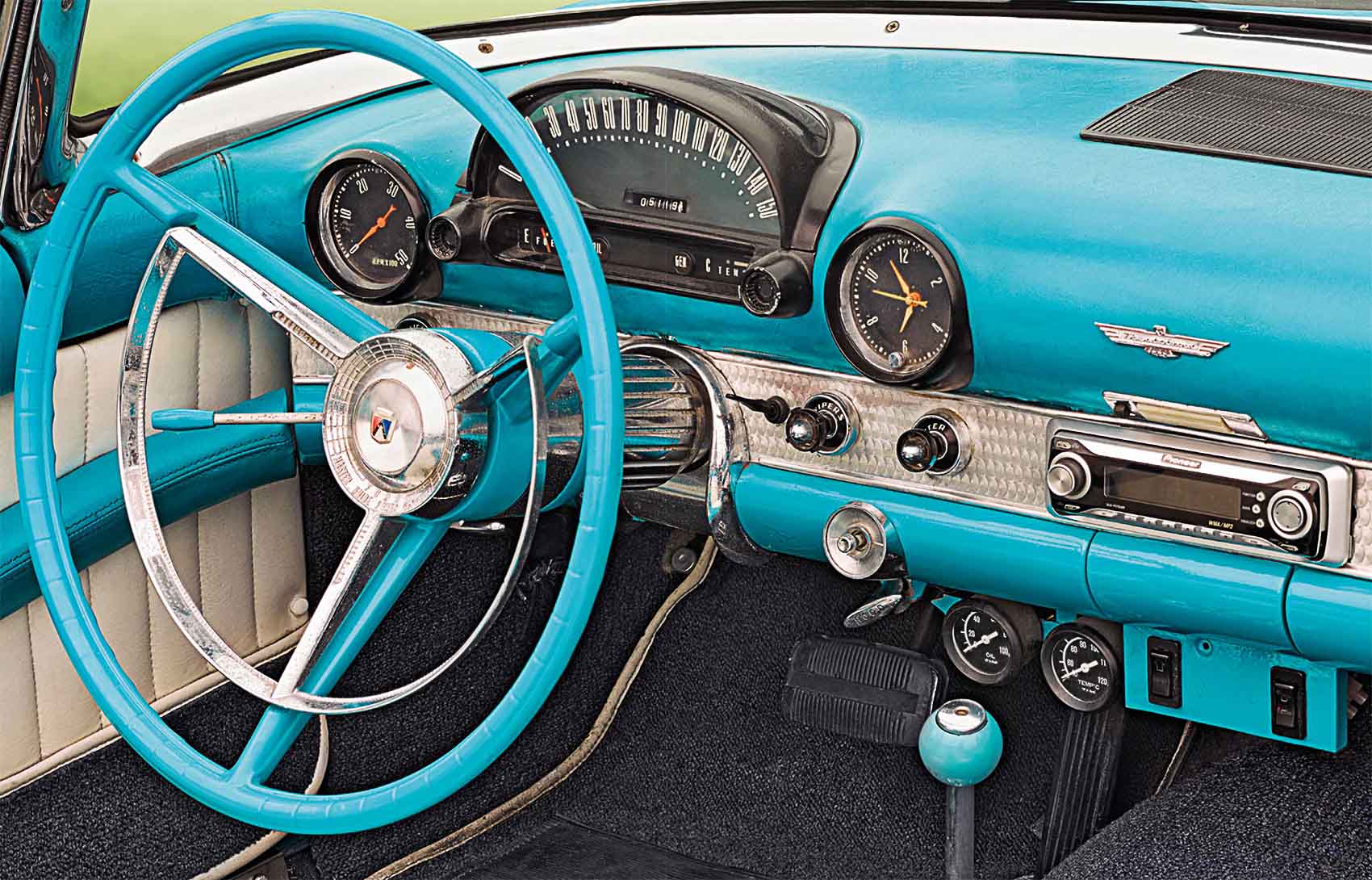
Superb period interior
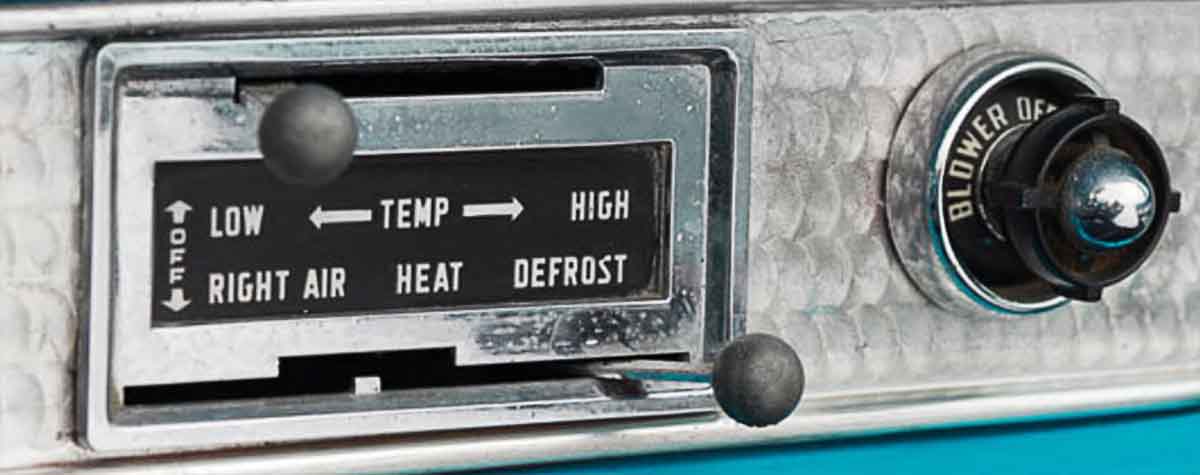
Heater controls
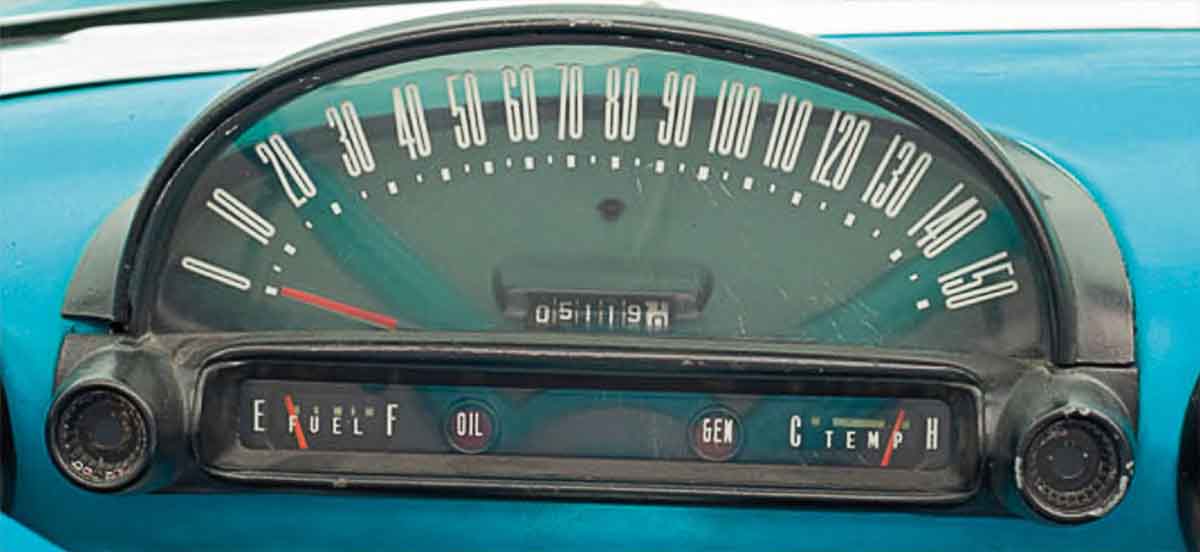
Sweeping speedometer
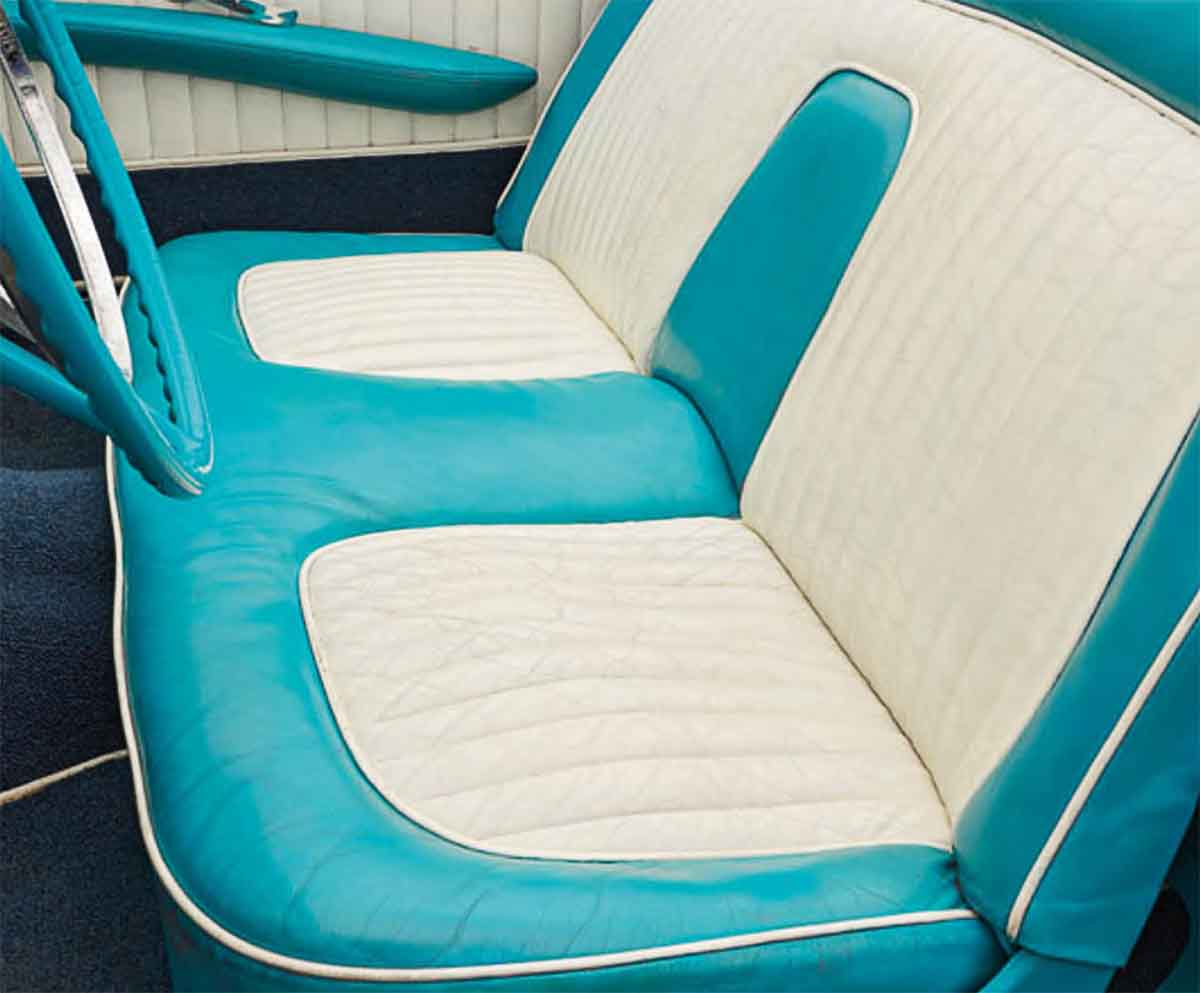
Bench seat built for two
It is a quote. The Classic Car Book – The Definitive Visual History 2016




